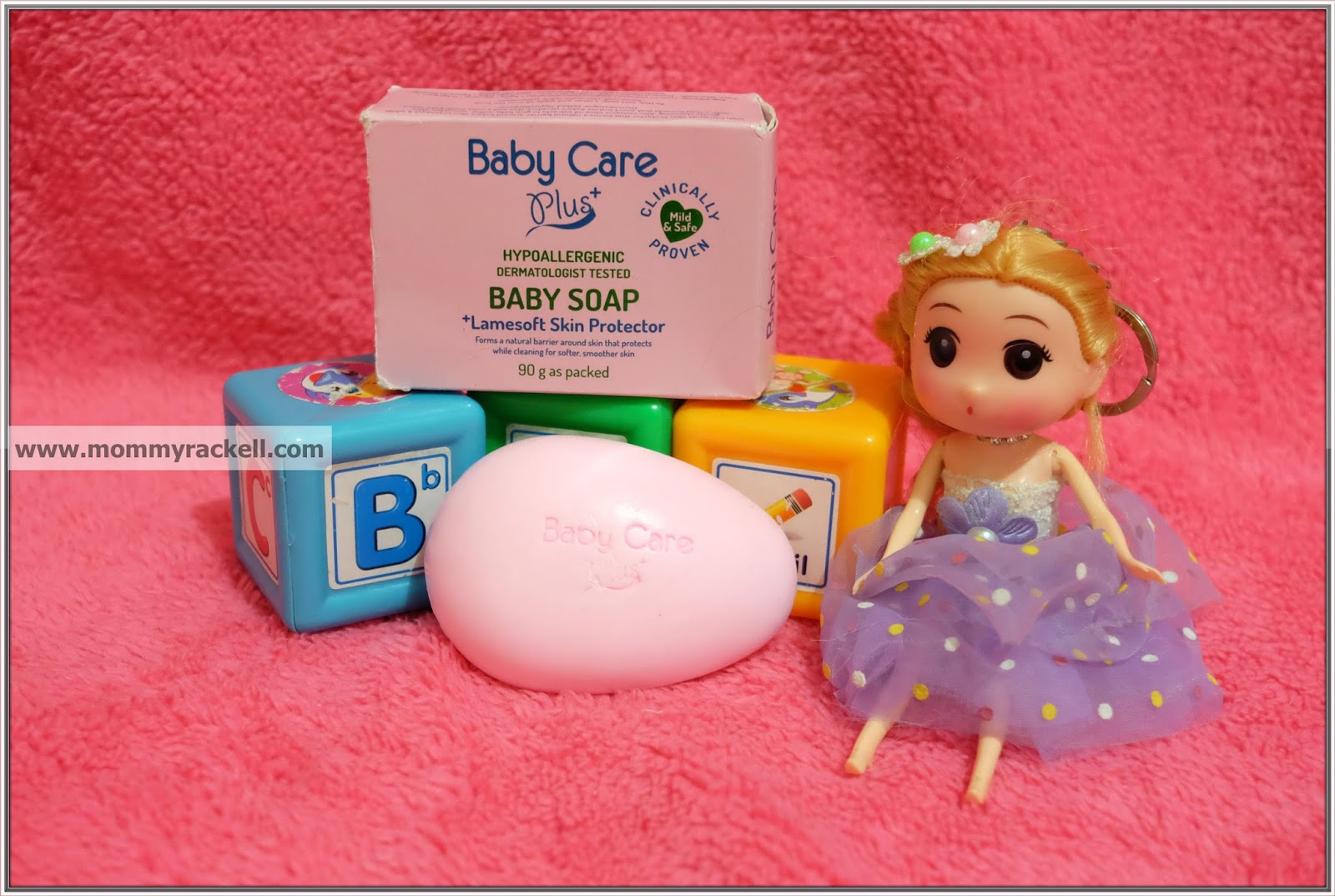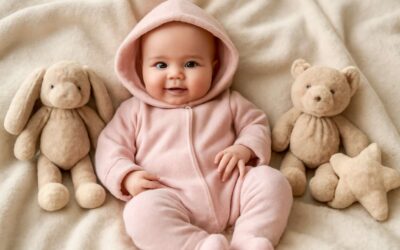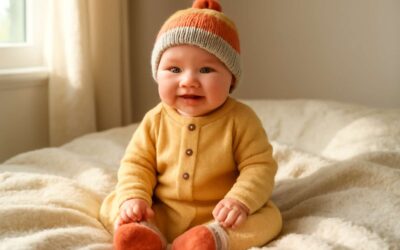Understanding Infant Sleep Temperature and Its Importance
What Is Baby Sleep Temperature and Why Does It Matter?
In the quiet hours of the night, a baby’s comfort hinges on more than just soft lullabies and gentle cradling — it’s deeply intertwined with their sleep temperature. Understanding what constitutes optimal sleep temperature for infants is crucial, especially when selecting the right baby clothing for sleep temperature. An environment that’s too hot or too cold can disrupt precious sleep, impacting a baby’s growth and mood. According to pediatric experts, the ideal sleep temperature for infants hovers between 16°C and 20°C, creating a cozy haven that promotes restorative rest.
Baby clothing for sleep temperature plays a pivotal role here. Lightweight, breathable fabrics help regulate body heat, preventing overheating or chilling. Opting for clothing that adapts to fluctuating temperatures ensures your little one remains comfortable throughout the night. In South Africa’s diverse climate, understanding how to choose appropriate sleepwear can make all the difference, transforming a restless night into peaceful slumber. After all, when babies are snug and thermally balanced, everyone wakes up happier and more energized!
Signs of Overheating or Coldness in Babies
Understanding infant sleep temperature is essential for ensuring your baby’s comfort and safety during those precious nighttime hours. When a baby’s sleep environment veers too far from the optimal range, it can lead to restless nights and potential health concerns. Recognizing the signs of overheating or coldness in babies requires a watchful eye and a gentle touch. Overheating often manifests as flushed cheeks, sweating, or a damp neck, while coldness may present with pale skin, shivering, or cold hands and feet. These subtle cues are vital indicators that your baby’s sleep temperature needs adjusting.
Choosing the right baby clothing for sleep temperature is more than just selecting adorable pajamas; it’s about understanding how fabrics interact with your baby’s body heat. Lightweight, breathable fabrics like cotton are ideal, especially in South Africa’s diverse climate, where temperature fluctuations are common. To help gauge your baby’s comfort, consider the following:

- If your baby feels warm or sweaty, it’s time to remove a layer or switch to a cooler fabric.
- If their hands and feet are cold, adding a cozy layer or choosing warmer sleepwear can make a significant difference.
By paying close attention to these signs and selecting suitable baby clothing for sleep temperature, you can create a soothing environment that promotes restful, undisturbed sleep. When your little one is thermally balanced, everyone benefits—more peaceful nights and brighter, happier days!
How Environment Affects Baby Sleep Comfort
In the enchanting realm of infant slumber, the delicate balance of sleep temperature often determines whether dreams are sweet or restless. Recent studies reveal that a staggering 70% of babies wake during the night due to discomfort caused by improper sleep environments. This underscores the profound importance of understanding infant sleep temperature, for it is the unseen guardian of peaceful nights and vibrant days.
The environment in which your baby rests acts as an invisible force, shaping their comfort and safety. Warmth, humidity, and even the ambient air quality weave a tapestry that influences sleep quality. For example, in South Africa’s diverse climate—ranging from balmy coastal breezes to crisp mountain air—the choice of appropriate baby clothing for sleep temperature becomes vital. It’s about more than mere fabric; it’s about creating a sanctuary where your little one’s body can thrive in harmony with the surroundings.
When selecting baby clothing for sleep temperature, consider these factors:
- Fabric breathability to prevent overheating
- Layering options for fluctuating temperatures
- Ease of dressing and undressing for nighttime adjustments
The right combination ensures your baby remains comfortably thermoregulated, fostering uninterrupted, restorative sleep that nurtures growth and development. Because in this miniature universe, comfort is the key to unlocking the realm of dreams!
Choosing the Right Baby Clothing for Optimal Sleep Temperature
Materials Ideal for Baby Sleepwear
Choosing the right baby clothing for sleep temperature isn’t just about comfort—it’s a delicate dance between breathability, insulation, and safety. In South Africa’s diverse climate, ensuring your little one stays neither too hot nor too cold can be a challenge. The secret lies in selecting materials that adapt to fluctuating temperatures while maintaining a cozy environment fit for restful sleep.
Natural fibers like organic cotton and bamboo are highly recommended for baby sleepwear because they regulate temperature, wick away moisture, and prevent overheating. These materials are soft on sensitive skin and help maintain an optimal sleep temperature throughout the night. When it comes to fabric types for baby clothing for sleep temperature, the goal is to find a balance—light enough to prevent overheating but warm enough to ward off chills. A layered approach, such as a lightweight onesie topped with a snug sleep sack, offers flexibility for changing conditions.
In the quest for perfect sleep comfort, consider the following:

- Breathable fabrics like organic cotton and bamboo
- Moisture-wicking properties to prevent dampness
- Layering options for adaptable warmth
The right combination of these elements ensures your baby remains snug and secure, transforming their sleep environment into a sanctuary where temperature regulation is seamlessly managed—an essential aspect of quality sleep for your precious one.
Fabric Weights and Thickness
Choosing the right fabric weight and thickness for baby clothing for sleep temperature is a nuanced process—one that demands a delicate balance between warmth and breathability. In South Africa’s varying climate, this becomes even more vital, as temperature fluctuations can quickly turn a peaceful sleep into a restless one. Light, airy fabrics are essential during warmer months, while slightly thicker materials provide comfort when cooler evenings settle in.
Opt for natural fibers like organic cotton and bamboo, which naturally adapt to changing conditions. These materials don’t just regulate temperature; they also wick away moisture, preventing dampness that could disturb your baby’s sleep. Sometimes, layering is the secret weapon—think a lightweight onesie combined with a snug sleep sack—allowing you to modify your baby clothing for sleep temperature as needed.
- Start with a breathable, lightweight fabric for warm nights.
- Increase thickness gradually with layered clothing during cooler periods.
- Prioritize natural, moisture-wicking materials for consistent comfort.
Understanding fabric weights and their role in sleep temperature helps foster a safer, more restful environment for your little one. When each layer and fiber type aligns with the natural rhythms of the South African climate, it’s as if the universe conspires to cradle your baby in perfect comfort—an unspoken testament to the importance of thoughtful baby clothing for sleep temperature.
Design Features That Promote Comfort
Choosing the right baby clothing for sleep temperature is an art form that can turn a restless night into a serene slumber. The secret lies in design features that promote comfort without sacrificing safety. Think breathable fabrics with flat seams and snug but not tight fits—these little details make a world of difference.
Layering is your best friend here! A simple rule of thumb: start with a lightweight, natural fabric for warm nights and add layers as the temperature drops. Materials like organic cotton and bamboo are champions—they wick moisture away and adapt to fluctuating conditions, keeping your baby cozy and dry.
For optimal sleep temperature, consider clothing with clever design features such as zipper covers to prevent skin irritation or adjustable cuffs that grow with your little one. Remember, the goal is to create an environment where your baby feels snug but not overheated—because, let’s face it, nothing ruins a good sleep faster than a sweaty, uncomfortable baby!
Seasonal and Climate Considerations
Adapting Baby Clothing for Different Seasons
As the seasons shift across the South African landscape, so too must the baby clothing for sleep temperature. The subtle dance of temperature changes—whether the gentle warmth of summer or the crisp chill of winter—demands a wardrobe that adapts like a chameleon in the wild. Just as a mythical creature shifts its hues to blend with its environment, so should baby sleepwear respond to the climate’s whisperings. During warmer months, breathable fabrics such as cotton are essential, allowing tiny bodies to breathe and prevent overheating. Conversely, winter calls for layers of soft, insulating materials that cocoon infants in warmth without risking overheating.
In regions where temperatures fluctuate dramatically, layering becomes an enchanted technique—an invisible armor of comfort—making it easier to adjust baby clothing for sleep temperature throughout the night. Consider a simple yet vital list of elements to keep in mind:
- Light, breathable fabrics for summer nights.
- Insulating, moisture-wicking layers for colder evenings.
- Flexible, easy-to-remove garments for quick adaptation.
Adapting baby clothing for sleep temperature is akin to a delicate art—balancing safety, comfort, and climate cues—ensuring that each infant’s restful slumber remains undisturbed by the whims of the weather. In South Africa’s diverse climate, this dance of fabric and form becomes an essential part of nurturing tiny explorers as they drift into dreamland.
Climate-Specific Recommendations
In the shadowed corridors of South Africa’s climate, where the sun’s warmth can suddenly give way to icy whispers, the choice of baby clothing for sleep temperature becomes a ritual of survival and comfort. The fluctuating temperatures demand more than mere fabric; they beckon a symphony of layers, crafted to respond like a living, breathing entity to the environment’s silent song. As the seasons shift with unpredictable grace, so too must the wardrobe of our tiny explorers evolve—adapting seamlessly to the chill of winter or the gentle caress of summer nights.
When selecting baby clothing for sleep temperature, consider the climate-specific nuances that influence safety and coziness. In colder months, insulating layers—think soft wool or thermal fabrics—act as enchanted shields, preventing the icy grip from seeping into delicate bones. Conversely, during sultry summer nights, breathable cotton and light, airy garments allow the skin to breathe, warding off overheating. The key lies in the art of layering: an invisible armor that can be adjusted with the flick of a sleeve or the removal of a garment.
In regions with capricious weather, a simple yet essential approach emerges:
- Opt for moisture-wicking fabrics to keep infants dry and comfortable;
- Use flexible, easy-to-remove garments for quick adaptation;
- Employ layering strategies that respond to temperature fluctuations with ease.
Each element becomes a vital fragment of the nocturnal tapestry, woven to ensure that the fragile dreamer remains cocooned in a sanctuary of warmth and breathability. The dance of fabric and form, delicate yet deliberate, underscores the profound importance of understanding the nuances of baby clothing for sleep temperature—an art as ancient as the shadows themselves, yet ever vital in the modern world.

Sleep Environment and Additional Tips
Maintaining the Ideal Room Temperature
In the shadowed silence of a nursery, the ambiance becomes an invisible force—an unseen shroud that can either cradle a baby in comfort or cast a chill of discomfort. Maintaining the ideal room temperature is paramount, for it weaves a delicate web where baby clothing for sleep temperature can truly perform its silent magic. An environment that’s too cold whispers of restless nights, while warmth that’s too intense can suffocate delicate breaths. Balance is key, and it begins with understanding the subtle dance between air, fabric, and skin.
To preserve this fragile equilibrium, consider implementing a few simple yet essential measures. Keep the room’s temperature steady, ideally between 16-20°C, and avoid sudden drafts or temperature fluctuations. Venturing into the realm of climate-specific recommendations, layering becomes an art—clothing that can be added or removed with ease ensures the baby remains cocooned in comfort. When selecting baby clothing for sleep temperature, opt for breathable fabrics that adapt to changing conditions, preventing overheating or chill. A well-maintained sleep environment, combined with thoughtful choices in sleepwear, creates a sanctuary where restful nights are not just a dream but a tangible reality.
Using Sleep Sacks and Swaddles
The quality of your baby’s sleep environment plays a crucial role in their overall well-being. While maintaining the right room temperature is vital, the right choice of baby clothing for sleep temperature can make all the difference. Sleep sacks and swaddles, in particular, are invaluable tools for creating a snug, safe haven for your little one. These items help regulate body temperature, reducing the risk of overheating or chilling throughout the night.
Using sleep sacks or swaddles made from breathable, natural fabrics ensures your baby remains comfortable, regardless of the season. They allow for gentle airflow, which prevents overheating, especially in warmer climates like South Africa. For added safety and comfort, consider the following:
- Choose sleepwear that is appropriately layered—less is often more.
- Opt for breathable fabrics such as cotton or bamboo, which adapt to fluctuating sleep temperatures.
- Ensure the sleep sack or swaddle fits snugly but not too tight, promoting unrestricted movement and safe sleep.
Incorporating these elements into your baby’s sleep routine helps maintain a stable sleep temperature, fostering restful nights and healthier growth. When selecting baby clothing for sleep temperature, consider the environment and your baby’s needs—sometimes, less really is more, especially when it comes to comfort and safety.
Monitoring Baby’s Comfort During Sleep
A stable sleep environment is essential for your baby’s well-being. Even the slightest fluctuation in temperature can disturb their rest and affect overall health. Monitoring your baby’s comfort during sleep is crucial, especially when choosing the right baby clothing for sleep temperature. Babies can’t communicate discomfort, so it’s up to us to observe their cues and adjust accordingly.
Look for signs such as sweating, flushed cheeks, or cold hands and feet. These indicators can signal that their sleep temperature isn’t quite right. Regularly checking on your little one ensures you can make timely adjustments, whether that means adding or removing layers of baby clothing for sleep temperature. Remember, sometimes a simple change like swapping out a sleep sack for lighter fabrics can make all the difference!
Layering Guidelines Based on Room Temperature
Within the shadowed corners of a nursery, the unseen battle between warmth and chill rages silently. A stable sleep environment, where the room’s temperature stays within the gentle range of 18-22°C, is the unseen guardian of your baby’s serenity. The faint flicker of a nightlight illuminates the importance of choosing the right baby clothing for sleep temperature—layered yet breathable, soft yet resilient—each piece a whisper of comfort in the darkness.
To conjure the perfect cocoon, consider the art of layering, a dance of fabric and heat. When the room’s chill beckons, add an extra layer—perhaps a light cotton onesie beneath a cozy sleep sack. Conversely, in warmer nights, a single, lightweight garment might suffice. For rooms hovering around the mid-range, a simple long-sleeve bodysuit paired with a breathable sleep sack often strikes the balance. Remember, the key is adaptability; monitor your baby’s cues and adjust accordingly, for the night holds no mercy for discomfort.
Safety Tips for Baby Clothing During Sleep
Avoiding Overbundling
In the shadowed realm of infant slumber, the fine line between comfort and peril is often cloaked in unseen risks. Overbundling is a treacherous trap, whispering the danger of overheating—an insidious threat that can lurk beneath layers of seemingly innocent baby clothing for sleep temperature. Vigilance is paramount, for too many garments can smother the delicate equilibrium necessary for restful sleep. The key is to embrace simplicity, allowing the baby’s natural ability to regulate temperature to flourish.
To stave off the silent menace of overheating, consider the layering principle—adding or removing garments based on the ambient environment. Avoid wrapping your little one in a fortress of fabric, which can turn a peaceful night into a perilous ordeal. Instead, monitor their tiny, fragile chest for signs of distress or warmth—cold hands and feet are not always indicators of coldness, but a lack of heat retention can be just as dangerous.
Remember, the magic lies in maintaining a gentle balance—one that respects the fragile symphony of a baby’s sleep temperature. When selecting baby clothing for sleep temperature, opt for breathable fabrics and avoid excessive layers that can trap heat. The darkness holds secrets that only attentive guardians can decipher, ensuring each night remains a sanctuary of safe, serene slumber.
Ensuring Proper Fit
In the shadowed silence of a baby’s slumber, safety becomes a delicate dance—a ballet performed in the dim glow of vigilance. When choosing baby clothing for sleep temperature, ensure garments fit snugly yet comfortably, avoiding any constriction that could hinder natural movement. An overly tight fit can trap heat and restrict circulation, turning a peaceful night into a nightmarish ordeal. Conversely, clothing that is too loose may pose a suffocation risk, especially if it bunches or entangles.
To safeguard your tiny sleeper, always verify the proper fit before settling them in for the night. A simple test—pinch the fabric at the shoulder or waist—should reveal a little room for growth, but not excess fabric that can cause entrapment. Remember, each baby is a unique creature of comfort, requiring careful attention to the fit of their baby clothing for sleep temperature. When in doubt, opt for clothing with minimal, secure fastenings and breathable fabrics, ensuring both safety and serenity in their nocturnal refuge.
Safe Sleep Practices
Ensuring baby clothing for sleep temperature is crucial for safe and restful nights. Babies are particularly vulnerable to temperature fluctuations, making vigilant supervision essential. Always choose baby clothing for sleep temperature that allows for easy adjustment as the night progresses. Soft, breathable fabrics like cotton help prevent overheating, while appropriate layering can keep chilly drafts at bay.
Safety tips for baby clothing during sleep include avoiding loose or bulky garments that could pose a suffocation risk. Instead, opt for snug-fitting sleepwear that covers the entire body without constricting movement. Check that fastenings are secure yet gentle on delicate skin and avoid accessories like ties or buttons that could entangle during sleep. Remember, a well-fitted, breathable ensemble is your best safeguard for a peaceful, safe sleep environment.
Conclusion
Ultimately, choosing the right baby clothing for sleep temperature is about more than just fabric—it’s about creating a cocoon of comfort that adapts seamlessly to your little one’s needs. In South Africa’s diverse climate, where chilly mornings and warm afternoons coexist, finding the perfect balance can feel like navigating a labyrinth. Yet, understanding how to layer and select breathable fabrics ensures your baby stays cozy without overheating or feeling chilled.
For caregivers, this knowledge transforms bedtime from a nightly gamble into a predictable sanctuary of comfort. Think of it as tailoring a bespoke wardrobe for tiny dreamers—each piece carefully chosen to harmonize with the ambient temperature. When you prioritize breathable, natural fibers like cotton or bamboo, you’re not just dressing your baby; you’re nurturing their well-being in the delicate realm of sleep.
- Monitor the room temperature regularly.
- Choose versatile layers that can be added or removed.
- Opt for baby clothing for sleep temperature that promotes airflow and moisture-wicking.
In this dance of comfort and safety, your attentiveness turns into a gentle rhythm that fosters restful nights. After all, understanding and respecting your baby’s sleep temperature needs is the cornerstone of nurturing their growth and happiness—an investment that pays dividends in every peaceful, restorative sleep.



0 Comments